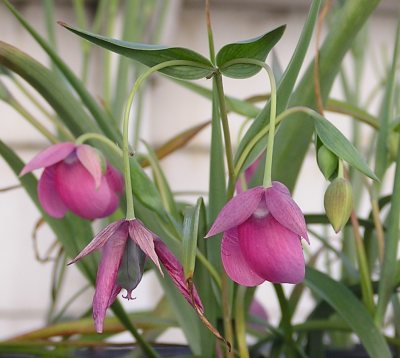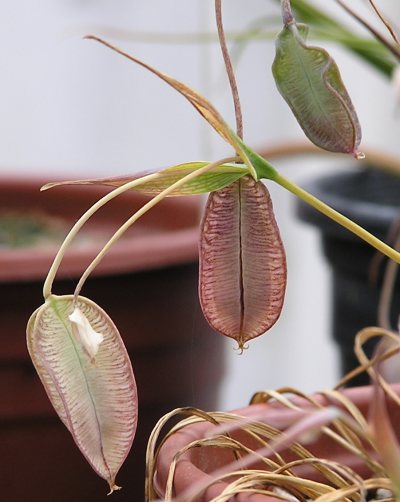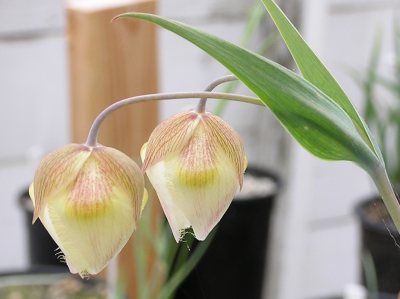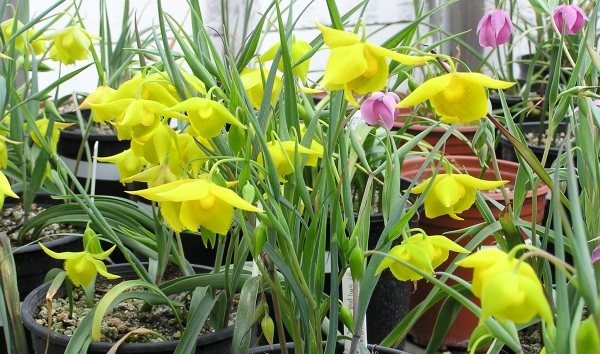March 2013


This year the basal leaves of the C. amabilis are exceptionally long and wide. Above we can see how an amabilis bears its basal leaf cowl-like around the stem.


Left: Some rain-wet blossoms of C. amabilis. Note the prominent tongue-like gland, and the fringe of hairs extending out from the interior. Right: Napa County plants in a road bank.
Also known as the Diogenes' Lantern, the Golden Globe Tulip, and the Golden Fairy Lantern, the brilliant yellow Calochortus amabilis is another resident species of the Bay Area, and Northern California (Napa, Marin, Solano, Lake, Mendocino, Colusa, Sonoma, Trinity, and Humboldt counties--also with an unusual population near San Diego!).
C. amabilis is often confused with its far less common relative C. pulchellus (Mt. Diablo Globe Lily), which is more of a greenish yellow color. The Diogenes' Lantern, however, is entirely lemon yellow, all the way up to its sepals.

A group of elegantly shaped sepals of C. amabilis as seen from above. Note the orange coloration of the central flower. This is the sign of an aging bloom. Soon the entire blossom will take on a rusty orange hue before it withers and falls away.
Like other Globe Lilies, C. amabilis favors shady hillsides and roadcuts, but can also sometimes be seen in direct sun in the oak woodlands where it is usually found. It is surprisingly adaptable to the various soils of its region. Diogenes' Lanterns generally have a single branched stem, sometimes as tall as 10 inches, with several 1 inch flowers to a branch.
















